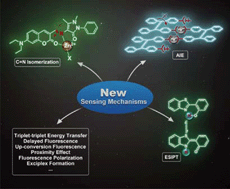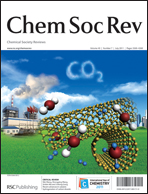New sensing mechanisms for design of fluorescent chemosensors emerging in recent years
Abstract
During the past decade, fluorescent chemosensors have become an important research field of supramolecular chemistry and have attracted great attention because of their simplicity, high selectivity and sensitivity in fluorescent assays. In the design of new fluorescent chemosensors, exploration of new sensing mechanisms between recognition and signal reporting units is of continuing interest. Based on different photophysical processes, conventional sensing mechanisms including photo-induced ![[double bond, length as m-dash]](https://www.rsc.org/images/entities/char_e001.gif) N isomerization, which can be ascribed to fluorescence changes via conformational restriction. In addition, excited-state intramolecular
N isomerization, which can be ascribed to fluorescence changes via conformational restriction. In addition, excited-state intramolecular


 Please wait while we load your content...
Please wait while we load your content...